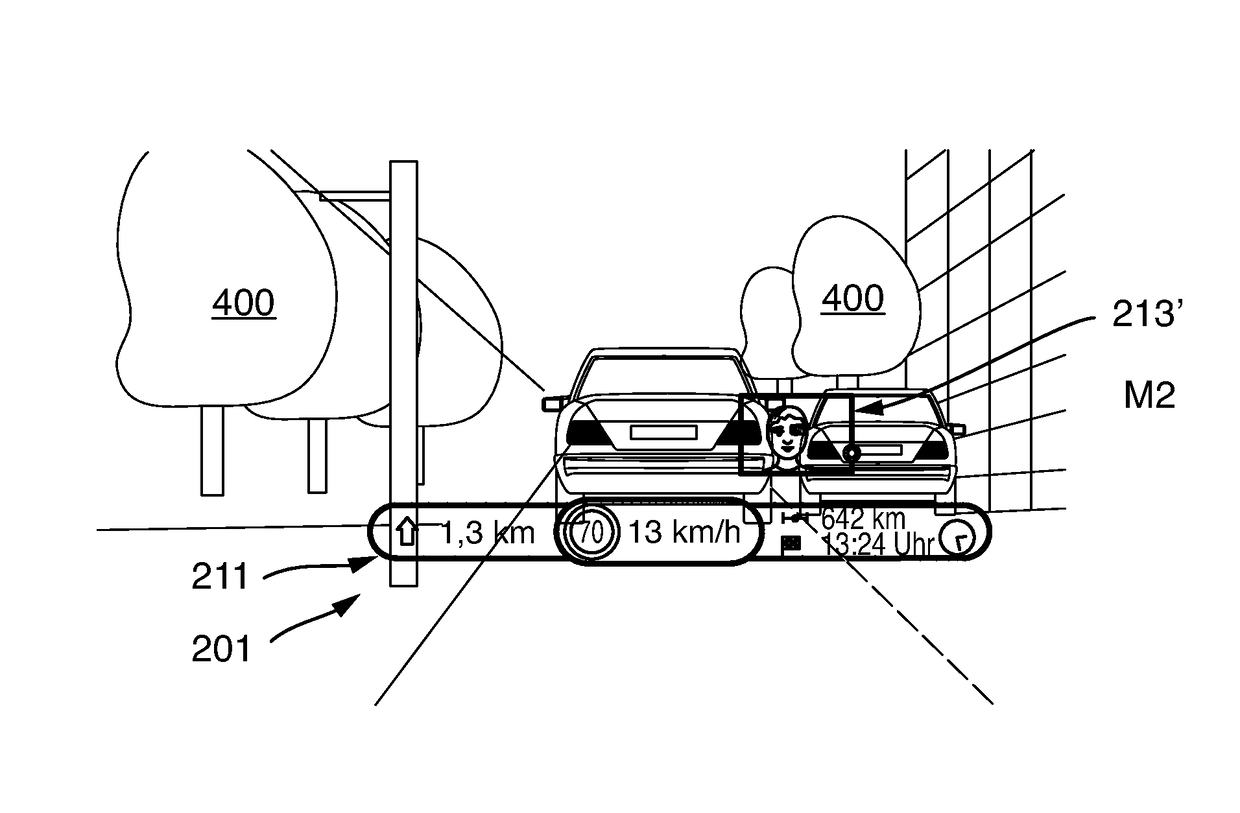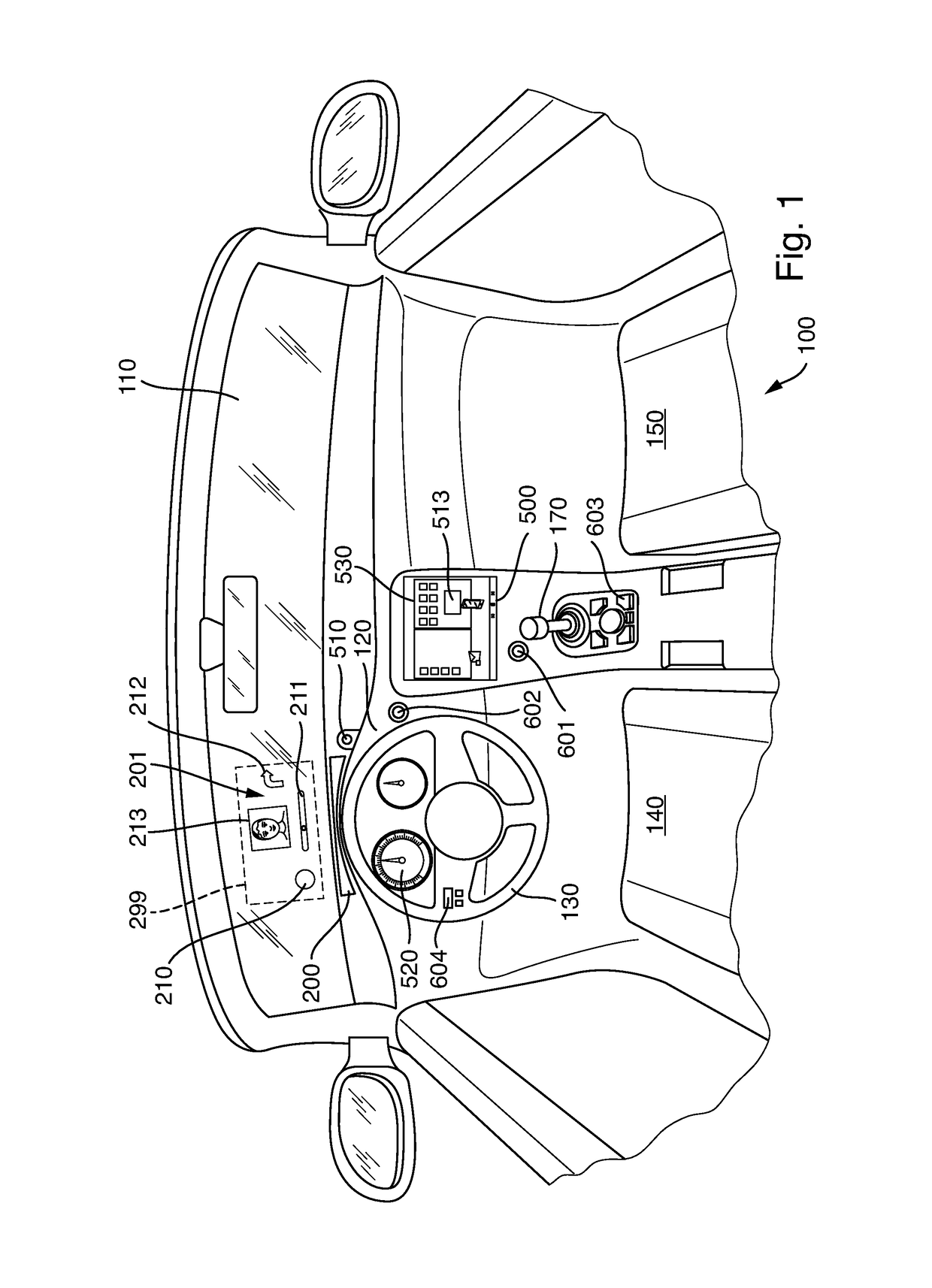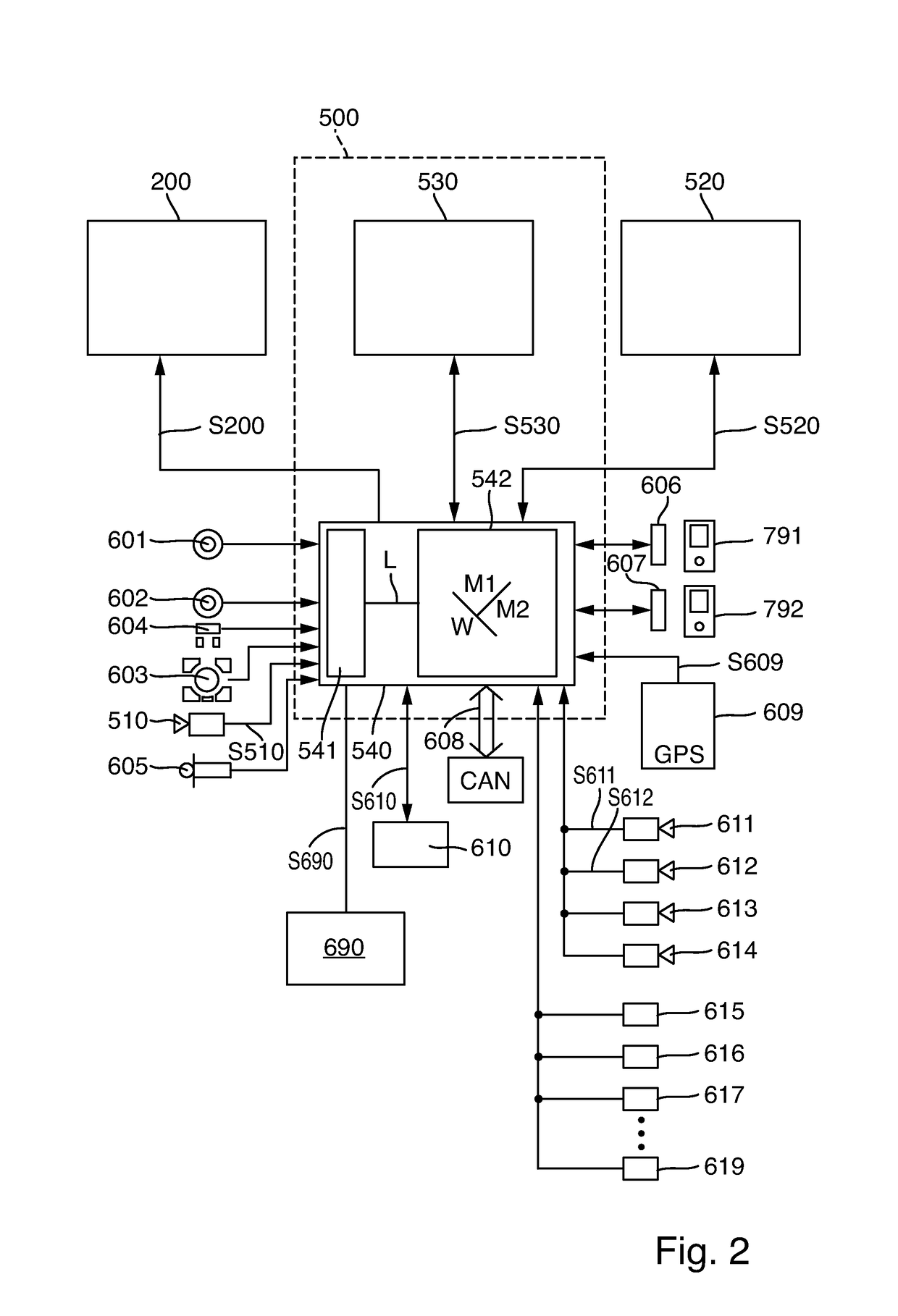System for a vehicle
a vehicle and system technology, applied in the field of vehicle systems, can solve the problems of significant increase in vehicle collision risk, achieve the effect of reducing driver workload, significantly increasing vehicle collision risk, and reducing driver workload
- Summary
- Abstract
- Description
- Claims
- Application Information
AI Technical Summary
Benefits of technology
Problems solved by technology
Method used
Image
Examples
Embodiment Construction
[0039]A view of a vehicle interior is shown schematically in FIG. 1. An image 201 may be projected in a reflection area 299 onto a front windshield 110 of a vehicle 100. The image 201 may be generated by a head-up display 200. The head-up display 200 may also be referred to as head unit display. The driver, who observes the traffic ahead through front windshield 110, has the projected image 201 at least partially in his field of vision. To enable a largely unobstructed view of the traffic ahead, large parts of image 201 may be made transparent or semitransparent, so that the driver can also easily see real objects or persons behind objects 210, 211, 212, 213 of image 201. Objects 210, 211, 212, 213 may be predominantly important information for the driver, such as a traffic sign 210 and / or a vehicle- and / or route-related display 211 and / or a navigation symbol 212 and / or a message image 213. In one embodiment of FIG. 1, objects 210, 211, 212, 213 may be virtual two- and / or three-dime...
PUM
 Login to View More
Login to View More Abstract
Description
Claims
Application Information
 Login to View More
Login to View More - R&D
- Intellectual Property
- Life Sciences
- Materials
- Tech Scout
- Unparalleled Data Quality
- Higher Quality Content
- 60% Fewer Hallucinations
Browse by: Latest US Patents, China's latest patents, Technical Efficacy Thesaurus, Application Domain, Technology Topic, Popular Technical Reports.
© 2025 PatSnap. All rights reserved.Legal|Privacy policy|Modern Slavery Act Transparency Statement|Sitemap|About US| Contact US: help@patsnap.com



